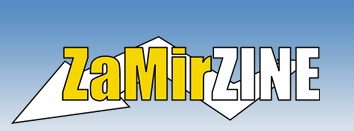 |
|
|
|
|||||||||
|
How Media Literacy Helps Identify PropagandaWhen you scroll through news feeds or watch videos online, it’s often tough to separate fact from spin. Media literacy gives you the tools to spot subtle cues, question sources, and recognize tactics designed to sway your opinion. By becoming more aware of how messages are crafted, you can better protect yourself from misinformation. But what exactly makes propaganda so persuasive, and how do you spot it before it shapes your views? Defining Media Literacy and PropagandaMedia literacy is increasingly important in an age where information is readily available from various sources. By developing media literacy skills, individuals can effectively access, analyze, evaluate, and create media messages. This capability is significant as it provides protection against propaganda, which can be defined as communication that intentionally distorts information to influence public opinion or behavior. Propaganda can manifest in various forms, including advertising techniques that are generally harmless, as well as more insidious forms exemplified by political disinformation. One of the complexities of propaganda lies in its ability to obscure the distinction between misinformation—false information shared without harmful intent—and disinformation, which involves the deliberate spread of falsehoods. Media literacy equips individuals with the tools to better identify biased or misleading messages and to understand the underlying motives behind these messages. As a result, individuals can make informed choices and are less likely to be swayed by manipulative or divisive content. By emphasizing critical thinking and skepticism, media literacy serves as a valuable defense against the challenges posed by an increasingly complex information landscape. Common Techniques Used in PropagandaTo effectively identify propaganda, it's important to understand the various techniques used in crafting persuasive messages. One common strategy is repetition, where specific ideas are emphasized multiple times to reinforce their presence in the audience's mind. Strong visual elements are often employed to evoke emotional responses and enhance the overall impact of the message. Omission of relevant facts can also play a significant role, as leaving out critical information can influence how audiences perceive an issue. Association is another technique used in propaganda, where certain ideas or products are linked with symbols or imagery to elicit specific feelings. Additionally, confusion and diversion tactics may be employed to obscure the truth, complicating the audience's ability to discern accurate information from misleading content. The Role of Critical Thinking in Analyzing Media MessagesMedia messages aim to inform, persuade, or sometimes mislead, which underscores the importance of critical thinking in their analysis. Critical thinking involves evaluating the credibility of sources and examining the motives behind the information presented. Media literacy extends beyond simply consuming information; it requires an active engagement in deconstructing that information. By analyzing context and identifying emotional triggers, individuals can uncover potential hidden agendas within media content. Recognizing common propaganda techniques, such as repetition and diversion, is also crucial in this process. Developing critical thinking skills through media literacy equips individuals to make informed decisions and helps them to identify and resist manipulation, particularly in an environment where misinformation can spread rapidly. Tools and Strategies for Spotting PropagandaEven experienced readers can be influenced by propaganda without employing effective tools and strategies. To enhance digital literacy, it's essential to verify the credibility of media sources by assessing the author's background and identifying potential biases. Careful examination of content is crucial—recognizing emotional manipulation or sensationalism can uncover underlying agendas. Additionally, it's important to identify manipulative language, particularly loaded words that are intended to provoke specific reactions. Scrutiny of facts and consideration of the broader context can reveal if information is being distorted to support a particular narrative. Familiarization with various types of propaganda can also improve one's ability to evaluate information critically. Developing these practices allows for a more objective and informed navigation of digital media. Empowering Communities Through Media Literacy EducationAs digital media increasingly influences public opinion and interpersonal communication, media literacy education has become essential for communities. This educational approach equips individuals with the skills to identify and critically assess propaganda and misinformation. By enhancing critical thinking abilities, participants can analyze messages encountered on social media and other digital platforms, which may reduce the spread of false information. Media literacy programs encourage collaboration among community members, fostering an environment where individuals can collectively identify manipulative tactics and resist polarized narratives. A notable trend is the growing demand for such training; for instance, a survey indicated that 58% of Europeans are seeking media literacy education. This interest underscores the need for tools that enable individuals to evaluate information sources rigorously and advocate for accurate reporting. Ultimately, the development of informed and resilient communities is crucial in navigating the complexities of today's digital landscape. By prioritizing media literacy education, communities can enhance their collective ability to discern factual information amidst pervasive misinformation. ConclusionBy strengthening your media literacy skills, you’ll spot propaganda more easily and avoid falling for manipulative messages. When you think critically about what you see and hear, question sources, and recognize common propaganda techniques, you protect yourself from misinformation. Don’t underestimate your ability to make informed choices—media literacy empowers you and your community. Stay curious, ask questions, and encourage others to do the same. Together, you can create a more informed and resilient society. |
||||||||
|
|
|||||||
